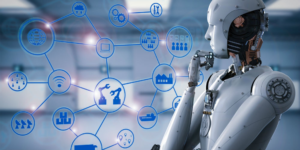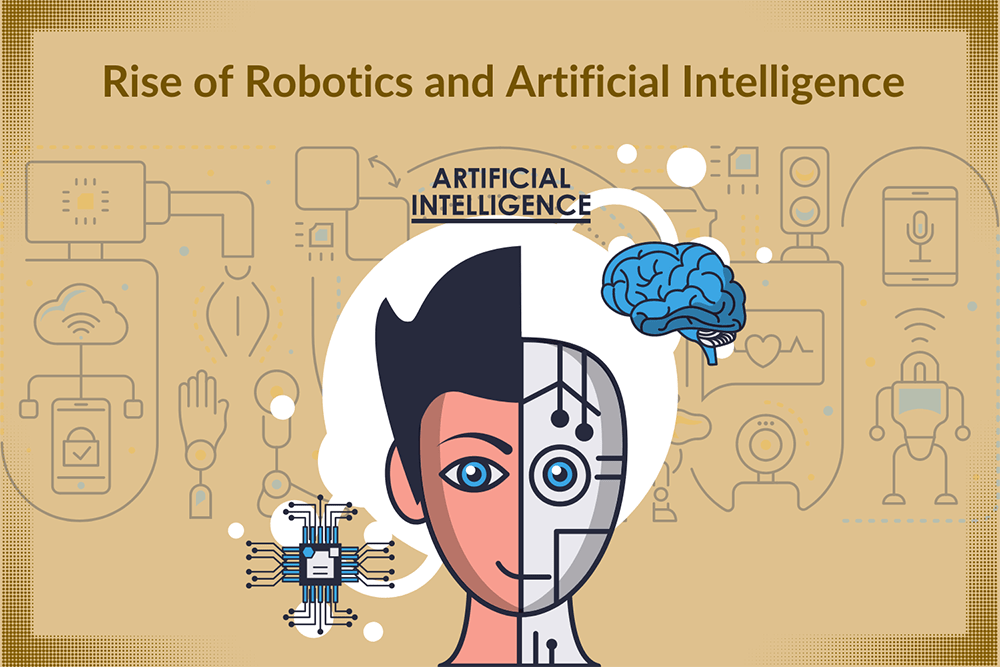Artificial intelligence is poised to disrupt every sector conceivable, including industrial robots. At the moment, the powerful combination of Artificial Intelligence or Machine Learning has already opened up a plethora of new automation options. Nonetheless, it improves the capabilities of industrial robotic systems. Though companies have yet to fully realize the promise of machine learning and robots, the applications appear to be promising. In this article, the rise of Robots and AI is discussed in the recent years.
Robots are among the earliest automated robots that were created to assist people in executing day-to-day work in a short amount of time. Furthermore, by employing machine learning robotics, engineers may create AI robots that can better grasp diverse settings and perform more efficiently.

Robots: The Future
Artificial robots play an important part in making the production process quicker and more cost-effective owing to mass production and obtaining economies of scale in industries ranging from agriculture to manufacturing. As a result, it aided those industries by manufacturing things more cheaply than others.
Furthermore, data labelling firms offer advanced data annotation services coupled with Artificial Intelligence applications in robotics and autonomous utility vehicles, as well as a variety of use cases. Drones, information collection, machine or human interactions, security monitoring, warehouse logistics, and many more are examples of these application cases.
Robots are rapidly being used in a variety of sectors. These robots might be either physical or software bots. It is anticipated that 3 million industrial robots will be in use by 2020. In addition, Gartner predicted that RPA software investment will exceed $1.3 billion in 2019. As a result, the demand and interest for bots of all kinds appears to be increasing.

Robotic surgery tools that can assist surgeons, law enforcement bomb robots that can navigate into dangerous terrain to minimize human injury and casualties, and food and package sorting robots that can sense different materials and properly pick and sort the objects are all examples of AI powered robotics.
With almost unlimited use cases spanning various industries, there is still tremendous room for innovation, and the robotics business isn’t going away anytime soon. Many businesses are discovering increased value, efficiency, and precision by incorporating robots into their diverse processes. This is due to the industry’s evidence of ROI, and as humans get more comfortable working with robots, firms will continue to invest in the technology. The incorporation of artificial intelligence into robotics makes them more valuable than ever.
Rise of AI:
At recent years, AI has beaten humans in the most strategic games, such as Jeopardy and Go. Recently, AI demonstrated the ability to deal with misinformation and partial information by defeating world-class poker players in a Texas’hold’em tournament. Although Artificial General Intelligence (machines that can compare to or surpass the human mind) is still a long way off, researchers believe that machines are gradually approaching human levels when performing “simple” (tasks that are simple for humans, not machines) tasks like understanding naturally spoken language or evaluating unknown, new situations (in non-predictable environments).
In fact, voice recognition is one of the most prevalent uses of AI today. Personal virtual assistants such as Alexa, Siri, Cortana, and Google Assistant can interpret and respond to voice. IBM has made the most significant improvement in voice recognition thus far, lowering the error rate in conversational speech recognition to 5.5 percent (relative to the human error rate is of 5.1 percent).
Predictive technologies used in early self-driving cars and search engines are examples of existing AI uses. AI is also being used by companies such as Netflix and Pandora to enhance content suggestions.

Advantages of Integrating AI to Robotics:
- The primary benefit of artificially intelligent robots is social care. They can advise individuals, especially the elderly, using chatbot-like social skills and powerful processing.
- Robotics also assists the agricultural business by producing AI-based robots. The farmer’s workload is reduced by these robots.
- Military bots may spy by using voice and visual detectors, as well as save lives by replacing troops.
- Robots are also used in volcanoes, deep oceans, extremely cold locations, and even space, where people cannot survive.
- Robotics is also employed in the medical and healthcare industries since it can conduct intricate procedures that people would make mistakes on, but with a pre-set of instructions and increased intelligence. AI-enabled robotics might significantly minimize the number of casualties.


